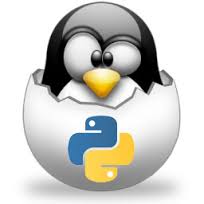 |
CS 3723 Programming Languages |
Rec 4 Answers | |
Answers to Recitation 4:
- Translation to RPN:
See To_RPN for a complete
solution.
All you need to do is add a few output statements to
the bare parser:
- Each time a letter is read by the scanner, output the letter.
- Each time an operator is read by the scanner, output the operator after calling the second operand.
- Ignore parentheses.
- Put a '$' at the end if you like.
- R-D- Parser for a
Simplified Python Dictionary:
Intuitively, the syntax of these simplified dictionaries,
consist of a sequence of items, each separated from the next
by a comma, enclosed in curly brackets. An item is
a digit, followed by a colon, followed by a letter.
Dict.java GetChar and Output /* Dict.java: D --> '{' L '}' L --> I { ',' I } I --> digit ':' letter */ class Dict { GetChar getChar = new GetChar(); char next; void D() { scan(); if (next == '{') { scan(); L(); } else error(1); if (next == '}') System.out.println("\nSuccess\n"); else error(2); } void L() { I(); while (next == ',') { scan(); I(); } } void I() { if (Character.isDigit(next)) { scan(); } else error(3); if (next != ':') error(4); scan(); if (Character.isLetter(next)) { scan(); } else error(4); } private void scan() { while (Character.isWhitespace(next = getChar.getNextChar())) ; System.out.print(next); } private void error(int n) { System.out.println("\nERR #: " + n + ", next:" + next); System.exit(1); } public static void main(String[] args) { Dict dict = new Dict(); dict.D(); } }// GetChar: fetch next char import java.io.*; public class GetChar { private Reader in; // file name for input // GetChar: constructor public GetChar () { in = new InputStreamReader(System.in); } // getNextChar: fetches next char public char getNextChar() { char ch = ' '; // = ' ' for compiler try { ch = (char)in.read(); } catch (IOException e) { System.out.println("Exception"); } return ch; } }
{ 3:a } {3:a} Success { 2:b , 4:d } {2:b,4:d} Success { 2:b , 4:d , 3 : e } {2:b,4:d,3:e} Success {1:a,2:b,3:c,4:c} {1:a,2:b,3:c,4:c} Success [ 2:a] [ ERR #: 1, next:[ { 2:a ] {2:a] ERR #: 2, next:] { 3:a. 2:b} {3:a. ERR #: 2, next:. { 2:a, b:3 } {2:a,b ERR #: 3, next:b {2:a,3:4} {2:a,3:4 ERR #: 4, next:4
- R-D- Parser for the Weird Grammar:
Here is a description of all strings generated by this grammar, or
recognized by the parser:
-
b [ ( ] n
a [ a )] n
b, for n >= 0
/* ablm.c: parser based on * S ---> b M b * M ---> ( L | a * L ---> M a ) */ #include <stdio.h> #include <string.h> #include <stdlib.h> #include <ctype.h> void S (void); void M (void); void L (void); void scan(void); void error(int n); int next; int main() { scan(); S(); if (next == '$') printf("\nSuccess!\n"); else error(0); } void S (void) { if (next != 'b') error(1); scan(); M(); if (next != 'b') error(2); scan(); } void M (void) { if (next == '(') { scan(); L(); return;} else if (next == 'a') { scan(); return;} else error(3); } void L (void) { M(); if (next == 'a') { scan(); if (next == ')') { scan(); return;} else error(4); } else error(5); } void scan(void) { while (isspace(next = getchar())) ; printf("%c", next); } void error(int n) { printf("\nERR #: %i, next: %c\n", n, next); exit(n); }% cc -o ablm -Wall ablm.c % ./ablm bab$ bab$ Success! b ( a a ) b $ b(aa)b$ Success! b ( ( a a ) a ) b $ b((aa)a)b$ Success! b ( ( ( a a ) a ) a ) b $ b(((aa)a)a)b$ Success! b ( ( ( ( a a ) a ) a ) a ) b $ b((((aa)a)a)a)b$ Success! b ( ( ( ( ( ( ( ( ( a a ) a ) a ) a ) a ) a ) a ) a ) a ) b $ b(((((((((aa)a)a)a)a)a)a)a)a)b$ Success!
baba$ baba ERR #: 0, next: a a ( a ) b $ a ERR #: 1, next: a aba$ a ERR #: 1, next: a baab$ baa ERR #: 2, next: a b ( ( a a ) a ) a ) b $ b((aa)a)a ERR #: 2, next: a b ( b a ) b $ b(b ERR #: 3, next: b b ( ( a a a ) a ) $ b((aaa ERR #: 4, next: a b ( a ) b $ b(a) ERR #: 5, next: ) b ( ( a b ) a ) $ b((ab ERR #: 5, next: b
Revision date: 2014-02-14. (Please use ISO 8601, the International Standard.)